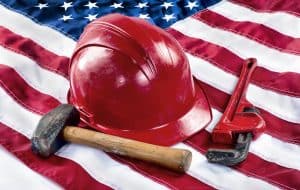 The Victorian (Labor) Government promised a review of WorkSafe Victoria’s enforcement policies in its 2014 campaign pledges as per the quote below. The independent occupational health and safety (OHS) review was conducted in 2016 with a lot of public submissions. The review’s final report was presented to the Victorian Minister for Finance, Robin Scott in December 2016. Everything has been quiet since. Continue reading “Will we ever get to see Victoria’s latest OHS review?”
The Victorian (Labor) Government promised a review of WorkSafe Victoria’s enforcement policies in its 2014 campaign pledges as per the quote below. The independent occupational health and safety (OHS) review was conducted in 2016 with a lot of public submissions. The review’s final report was presented to the Victorian Minister for Finance, Robin Scott in December 2016. Everything has been quiet since. Continue reading “Will we ever get to see Victoria’s latest OHS review?”
Category: transparency
New program launched that forecasts safety and risk levels
 Almost every occupational health and safety (OHS) inquiry by the Australian Government has acknowledged the inadequacies of data on workplace injuries, illnesses and deaths. The 1995 Inquiry into Occupational Health and Safety (Volume 2) (pages 377-378) by the (then) Industry Commission acknowledged the lack of empirical evidence and made up its own. The situation has barely improved.
Almost every occupational health and safety (OHS) inquiry by the Australian Government has acknowledged the inadequacies of data on workplace injuries, illnesses and deaths. The 1995 Inquiry into Occupational Health and Safety (Volume 2) (pages 377-378) by the (then) Industry Commission acknowledged the lack of empirical evidence and made up its own. The situation has barely improved.
However a new project by West Australian academic,
US says “nothing to see here, move along”
 The United States media continues to scrutinise the Department of Labor (DoL). On March 13 2017, The New York Times (NYT) expressed concerns about the lack of official media releases from the department, comparing the actions under a Trump administration against the Obama occupational health and safety (OHS) strategy. Some are claiming this to be a deliberate strategy but, until the Labor Secretary is confirmed, it may simply be caution. Such an apparently simple action can have broader effects on OHS management, as Australia learnt. Continue reading “US says “nothing to see here, move along””
The United States media continues to scrutinise the Department of Labor (DoL). On March 13 2017, The New York Times (NYT) expressed concerns about the lack of official media releases from the department, comparing the actions under a Trump administration against the Obama occupational health and safety (OHS) strategy. Some are claiming this to be a deliberate strategy but, until the Labor Secretary is confirmed, it may simply be caution. Such an apparently simple action can have broader effects on OHS management, as Australia learnt. Continue reading “US says “nothing to see here, move along””
Taking Total Cost of Injury seriously could substantially change how safety is managed
Cost is the last consideration in occupational health and safety (OHS) but is usually the first consideration in all other decisions. “Can we afford to improve something? No. So let’s do something else”. There is something fundamentally skewed in determining the cost-benefit analysis when it comes to workplace safety. For several years Safe Work Australia (SWA)…
Worker democracy reappears and OHS needs to be ready
Tripartite consultation of occupational health and safety (OHS) is largely a relic of the past. It remains in the structure of government policy formulation and in workplace safety legislation but, largely due to the decline in trade union presence in Australian workplaces; OHS consultation occurs more linearly than through formalised tripartism.
A recent example of contemporary consultation, that is likely to include OHS, was reported on in The Guardian newspaper on 17 July 2016. The incoming UK Prime Minister, Theresa May, wants to encourage the inclusion of a worker on company boards. It is a curious suggestion from a Conservative Prime Minister which has been leapt on as “workplace democracy” by some commentators. The workplace democracy or “industrial democracy” push is not a new idea and was once seriously proposed in 1977 but, according to an article in The Conversation, the political time was not right. Whether that time is now is debatable. Continue reading “Worker democracy reappears and OHS needs to be ready”
“We are the safest” – No, only half right
Governments around the world love to be able to claim their State or Country as the safest in the world, when they can. Australia has been plagued by such claims between various States but a report released on July 6 2016 shows that such claims are only half the story.
The Institute for Safety, Compensation and Recovery Research (ISCRR) released its report about “Work-related injury and illness in Australia, 2004 to 2014“. The report makes this extraordinary finding:
“Across Australia, there are twice as many estimated work-related injuries as there are accepted workers compensation claims. This indicates that many injuries do not progress into the nations workers compensation systems” (page 2)
This statement seems to indicate that political statements made on the basis of workers’ compensation data, the major rationale for most of the “we are the safest” statements, are only half right!
Culture – piss or get off the pot.
Andrew Hopkins has described organisational culture as “the way we as an organisation do things around here”. The sociology of this statement is sound and the occupational health and safety (OHS) context seems to be an accepted element of safety management. But for OHS professionals to continue to advocate the importance of a safety culture it is necessary for them to be aware of how culture is being interpreted and applied elsewhere. The Australian Labor Party recently stated that the Australian banking system needs a Royal Commission because, as Senator Sam Dastyari stated:
“We’ve seen scandal after scandal. We’ve seen failure after failure and we’ve seen a banking sector and a culture develop where effectively these matters are constantly being ignored”.
